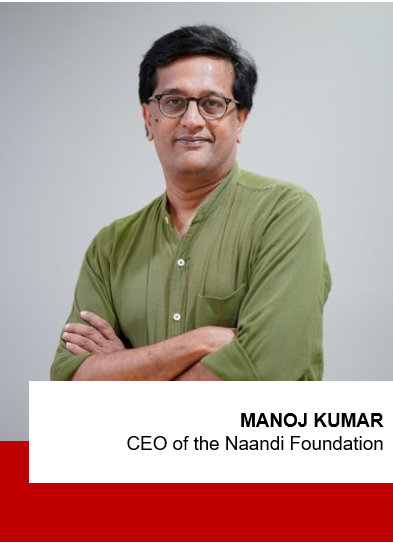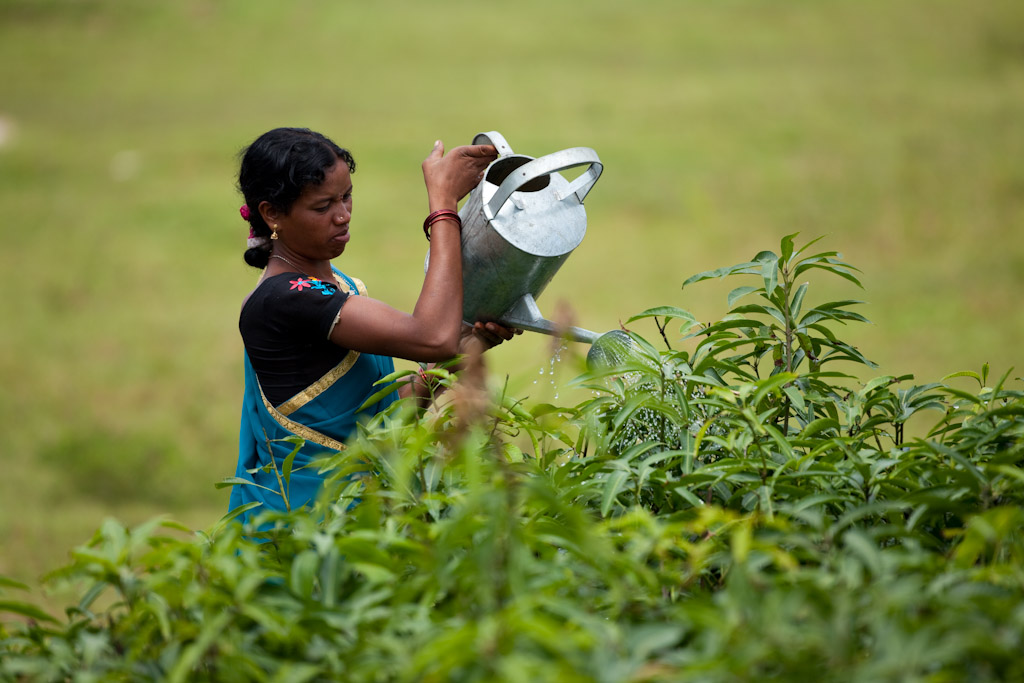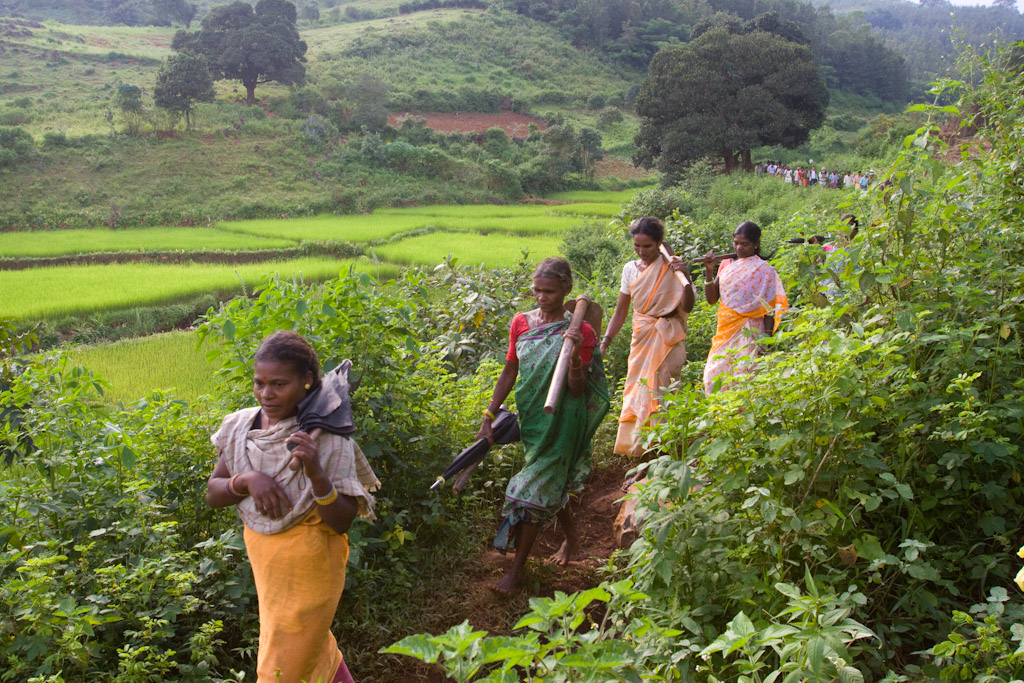In Eastern India, the valley of Araku is entirely inhabited by indigenous tribes. The area is so isolated, that only one main arterial road provides access to the valley. Twenty years ago, the marginalized Adivasi communities of Araku, were suffering from extremely low literacy and extremely high maternal mortality rates. The region had been deforested during the British settlements, leading to soil erosion, degradation and farmer poverty. The forest on which Adivasis’ livelihoods depended on, had disappeared.
In 2010, the Livelihoods Carbon Fund supported the Naandi Foundation to help tribal inhabitants regenerate their forest through sustainable land practices. Farmers learned how to make their own compost, increase soil fertility and even produce their own high quality and organic “araku coffee” that is now sold internationally. By combining carbon sequestration (1 million tons of CO2 to be stored in 20 years) and sustainable agriculture, the Livelihoods model has already planted 6 million trees, along with 3 million coffee saplings.
In 2018, Livelihoods pursued its support and launched with the Naandi Foundation an even more ambitious project that combines landscape preservation, soil restoration and sustainable agriculture. Livelihoods-Araku 2 project is converting 18, 000 hectares and training 40,000 farmers to sustainable land practices. From the top of the hills to the basins and rice paddies in the valley, the project’s goal is to restore the entire landscape, improve food security, preserve biodiversity to ensure the economic development of the entire valley. The Livelihoods-Araku 2 project will help sequester additional 2.3 million tons of CO2 in 20 years.
Visionary, highly involved to transform the lives of tribal families and connect them to the modern world, Manoj Kumar is the CEO of the Naandi Foundation. He explains how the Livelihoods-Araku project has transformed the lives of indigenous tribes disconnected from the world, and why it is urgent to talk about sustainable land management, instead of carbon offsets only.

Livelihoods: What does the criticism on carbon offsetting programs inspire you?
“The tragedy about humankind is to wait for a disaster to happen before we tackle climate change with concrete solutions. We need to urgently realise that environmental disasters can hit anywhere, at any time. In a world of interconnectedness, we should take this as an opportunity for businesses and nations in the developing countries to show how the whole idea of carbon offsets can be turned into high-scale projects with strong environmental, social and economic impacts.
This is exactly what we have been doing with the Livelihoods Funds in Araku Valley, since 2010, when we launched the first carbon project together. The Livelihoods model combines two extraordinary ideas: instead of purchasing carbon from the market, we are in a mechanism of carbon sequestration, which means we invest in parts of the world with land that need to be restored and populations that are ready to be involved. Second, the model helps eradicate poverty thanks to its strong economic development component. This is probably the smartest way to address several Sustainable Development Goals.”
Livelihoods: What has been achieved in Araku valley since the launch of the first project in 2010?
“The valley of Araku was previously an eco-region that had been highly deforested. Together with the Livelihoods team, we helped plant 19 varieties of trees, among which 1000 hectares of coffee saplings was planted, that not only sequestrate carbon but also generate income. In the second phase of the project, launched in 2018, we are going one step further to transform the valley into a fully regenerative agriculture landscape and address several aspects of climate change simultaneously.
Instead of just looking at the crops produced per household, we are now trying to valorise a holistic approach. For example, solutions to build a regenerative forest, close to these people’s homes, to help them sustainably cut firewood and warm their houses. We observe and nurture land, cattle management and resources management, at the same time. When we explained this to the local communities, it made extraordinary sense. Instead of being perceived as the creators of climate change, these tribes are now becoming role models.
And this, we achieved thanks to the help of private companies that decided to act beyond their boundaries and make a deep change for the communities’ livelihoods.”
Livelihoods: What are the sustainable development goals addressed by this model?
“What we are achieving in Araku relies on an extremely holistic approach and I am not just referring to carbon sequestration or poverty eradication. We are also addressing gender equality, food security, nutrition security to name a few. In the deadlock of international political negotiations, here you have a grassroots and high-scale action plan, which should serve as an inspiration for world leaders! Specifically given the fact that the Livelihoods Carbon Funds are supported by private companies, which are otherwise accused of exploiting the planet resources. Here we implement a model where these businesses pave the way to modern, alternative action for climate diversity.”
This is also a huge opportunity to push the agenda on biodiversity preservation, and couple it with nutrition and balanced-diet issues. Because we are moving from monoculture and industrialised agricultural models to organic, knowledge-based regenerative agriculture. And we are now able to help these communities compete in global markets. It’s a whole set of benefits that this livelihoods initiative is leading to. Referring to it through the only semantics of the word “carbon credits” is a very limited way to express what we are achieving in Araku.”


Livelihoods: If we don’t talk about carbon offsets, what is the project really about?
“We need to pause a moment on the whole concept of the carbon itself. I think it is important we collectively understand that carbon above the soil, is sustained by life below the soil. If the soil’s fertility is threatened, this means human life is in danger. The way we have been practising agriculture with excessive use of chemicals and fertilizers, was depleting the soil of its carbon, leading to dead soils and desertification.
What I most appreciate about the Livelihoods model is its positive carbon sequestration approach. To be honest, I sometimes believe we should stop using the word carbon, because what we are implementing in the valley is sustainable agricultural land-use management.
We should add a “P” in this, for Planet. Because we are promoting a bio-friendly landscape transformation that leverages the traditional knowledge of composting, rotational cropping, intercropping that improves soil fertility. Overall, what the project is achieving, is the well-being of the planet and communities through a common link of carbon. How can that be bad?”
Livelihoods: what are the challenges awaiting the Naandi Foundation and Adivasi tribes for the long-term transition of the valley?
“It is important to understand that what we are doing together with Livelihoods is very difficult. Succeeding in our mission implies a lot of collective action from the communities. Telling my communities to work hard on their land to sequester carbon for the rest of the planet implies a lot of effort, imagination and explanation efforts. It is almost insulting to tell them there is growing scepticism on carbon offsets. And the reason is simple: they are making efforts not only to improve their livelihoods but also to make the planet greener for our children. The challenge ahead of us is to continue to mobilize them. It’s not about entrepreneurship or business. It is about collectiveness. Bringing back harmony with nature needs continuous doses of inspiration from Naandi’s side with the community.
With Livelihoods’ support, we need to keep on sending delegations to Araku valley, whether these are business, media delegations, investors in the funds or new ones, to showcase a concrete and fully transformational approach for resilience.”
[1] To learn more about the project’s Sustainable Land-Use Management practices, click here.
How did the marginalized farmers of Araku step out of poverty?
Find out more with Manoj Kumar’s TED conference, published on February 14th 2020:
Photo credits: Hellio Vaningen / Naandi Foundation / Livelihoods Funds


